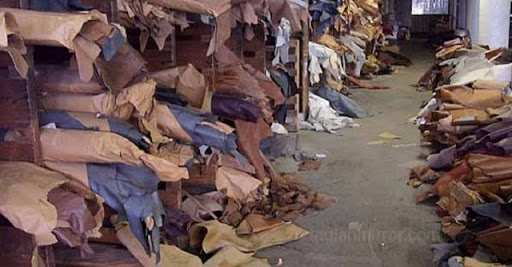Textile, footwear industries need support to unlock potential
PLAYERS in the textile and footwear industries say they have the potential to improve on their competitiveness and generate more foreign currency if Government continues promulgating policies that stimulate productivity.
Zimbabwe’s trade promotion agency, ZimTrade has announced that exports from the textile and footwear industries in the region spiked by 85 percent to US$32,3 million in the first eight months of last year from US$17,7 million in 2021.
ZimTrade attributed the surge in exports from Zimbabwe to increased demand for merchandise such as protective clothing in regional markets like Zambia and the Democratic Republic of Congo (DRC).
In separate interviews, industrialists in the textile and footwear sectors said given that most companies were operating with antiquated machinery, Government should avail affordable working capital targeting the whole value chains.
Bulawayo Leather Cluster secretary Mr Fungai Zvinondiramba said, “The first thing that needs to be done is make affordable working capital available; secondly most companies need retooling in terms of equipment that’s being used to produce and retooling should target the whole value chains.”
In the case of the leather industry, he said retooling should start from the farmer adding that it was imperative for the Government to continue intensifying support to the Micro, Small and Medium Enterprises, and Small to Medium Enterprises (SMEs).
“Support should be in both soft and hard skills. All businesses should be taught and introduced to the foreign markets and be capacitated so that they can be able to handle the different markets, the desire to export does not always equate the capacity to do so.
“Lastly more exposure to both local and foreign markets is essential,” he said.
Of late, ZimTrade has been offering capacity building programmes for local companies on market access locally and the export markets.
Bulawayo-based textile manufacturing concern, Cotton Pro Company managing director Mr Tararama Gutu said the positive growth trajectory in exports from textile and footwear sectors was encouraging.
“We are experiencing a brief surge in demand for textile goods from the region. The spinning sector can easily double its output if two issues of power supply and spare parts availability are sorted.
“There is capacity which is idle which requires raw materials and imported spare parts to resume production,” he said.
Official data from ZimTrade show that traditionally, the local textile market sector exports products mainly to South Africa with an estimated export market share of 91,74 percent, Zambia (1,91 percent), Germany (0,34 percent), Malawi with an exports contribution of 0,12 percent.
Once an important industry, the local textile sector collapsed in recent years when local clothing lines became uncompetitive in the face of cheap imports that flooded the market mainly from the Far East in countries like China.
In recent years, the textile and footwear sectors suffered a host of challenges, which saw the companies facing closure leaving thousands of workers jobless.
Millenium Footwear managing director Mr Stewart Simali said the Government should address issues to do with raw materials that was on the high side.
“The Government should address the duty on raw materials which is still very high. Duty in South Africa is 10 percent but duty in Zimbabwe is 25 percent so that alone curtails our competitiveness on the international market.
“The issue of retooling also needs to be addressed as a matter of urgency,” he said.
In order to improve competitiveness, Mr Simali said the Government should allocate a certain percentage under the quota system on Government to companies in the textile and footwear sectors.
“Of late, we have noted the Government is buying a lot of protective clothing such as safety shoes for the hospitals and other departments outside the country. So, if the Government can set aside a certain quota for the local industry, it can help us to stimulate production and if capacity is increased, the price goes down. If they allocate a certain quota on Government tenders to local industry, it also means a reduction in import bill,” he said.
At its peak in the 1990s, the footwear industry used to produce 8 million pairs of shoes and most shoe manufacturing factories in the country have in recent years shut down.
It is against this background that the sector has been prioritised for development in the National Trade Policy of 2012-2016 and Industrial Development Policy of 2012-2016.
Under the National Development Strategy 1 (NDS1), which is running between 2021 and 2025, building on Vision 2030 that seeks to achieve an upper middle-income economy status, the Government has also identified the leather sector as one key value-chains. — The Chronicle










